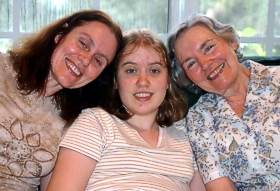Our Bio-Medical Recommendations
 Experience has convinced us that children on the autism spectrum develop most successfully and rapidly when their social, educational, and physiological needs are met and balanced within an individualized, Comprehensive Program.
Experience has convinced us that children on the autism spectrum develop most successfully and rapidly when their social, educational, and physiological needs are met and balanced within an individualized, Comprehensive Program.
In recent years, a large number of treatments have been introduced to help children with autism. There are some doctors who now specialize in creating protocols for children with autism, using some version of the “Defeat Autism Now” (DAN) protocol.
We feel that a number of children have been helped, but at least as many children have been adversely affected by this process. There are several ways in which families have attempted to use biomedical interventions. We feel that the first three approaches have created more adverse results than benefits. The fourth approach has been helpful to more children, and in our observation has done less harm.
We Do NOT recommend...
- Introducing various treatments simultaneously. In our experience, this is rarely helpful and creates difficulties. Children have wild swings in behavior and mood. Everyone has some idea about which treatment might be causing these difficulties but no one can really tell, because a ‘shot gun’ approach is being used for the child’s treatment.
- Introducing one treatment after another, with no rest period between treatments. Often, when this is done, the child begins to make improvements, only to have progress lost as additional new treatments are introduced. Some children who get one treatment after another in rapid succession don’t have the opportunity to establish new skills before they are again impacted by yet another new treatment.
- Introducing a biomedical treatment without first obtaining test or observation data that warrants that particular treatment. When there is no data to indicate that the treatment is warranted for that child in particular, there are also no baselines by which to measure whether the treatment is having an effect. This leads to making decisions about continuing a treatment based on “a feeling” about whether or not it is effective.
Many biomedical treatments are costly, time-consuming and difficult to implement. This approach can consume valuable resources, with no concrete evidence to show that the treatment is of value to that child. In our experience, many interventions that work well for one child on the autism spectrum are not effective for others. Individual assessment, baselines and a clear way for measuring effectiveness are essential.
We DO Recommend...
 Introducing a biomedical treatment that has the support of good research and is based on the child’s test results and/or careful observation data. After a trial period, retesting and/or taking data objectively is essential to evaluate the efficacy of that treatment. We feel that this has been helpful and effective for children involved in our programs.
Introducing a biomedical treatment that has the support of good research and is based on the child’s test results and/or careful observation data. After a trial period, retesting and/or taking data objectively is essential to evaluate the efficacy of that treatment. We feel that this has been helpful and effective for children involved in our programs.
For example, a blockage is found by x-ray in the intestines, deficiencies have been found via a blood test, or the child has been observed to have periods of lethargy and unresponsiveness that have been charted. A treatment is introduced. After a reasonable time, a re-test is done. There is no blockage, the blood levels are normalized, or the new chart shows that there is a clear reduction in the periods of lethargy.
For families who are attempting to help their children with biomedical interventions, we support this fourth approach both philosophically and through action. We will help you chart observations to create baselines, and we will help you evaluate the efficacy of a treatment by charting follow up data.
The benefits for children when their treatment is focused and streamlined are innumerable. We suggest balancing your bio-medical approach with our comprehensive program.